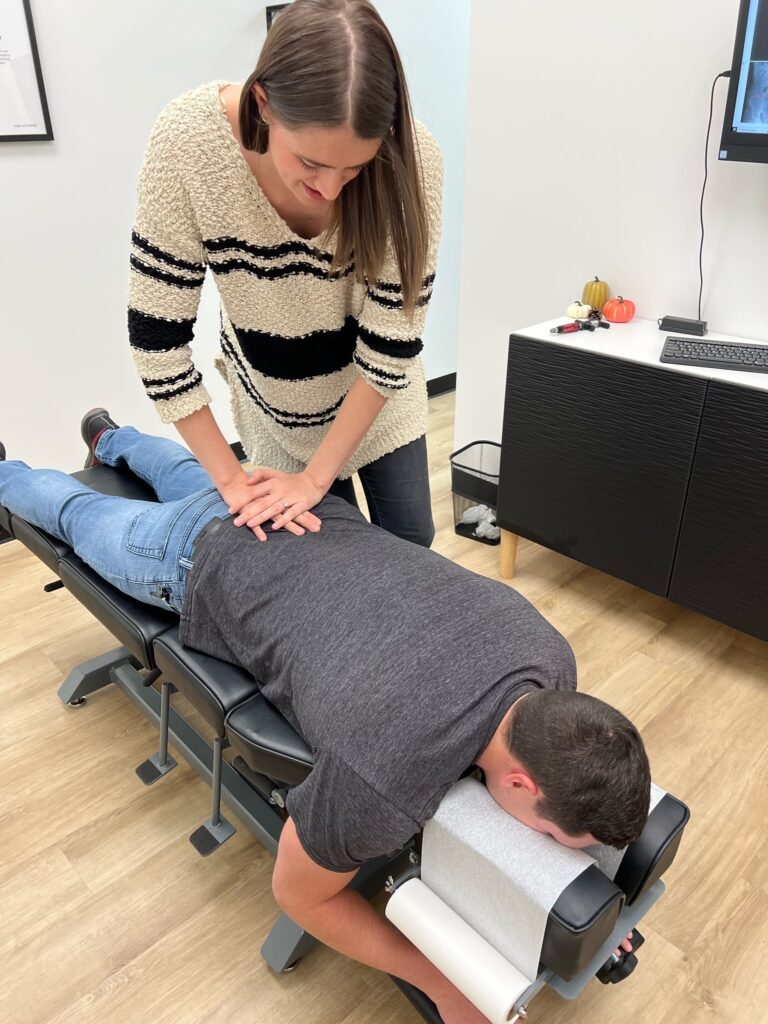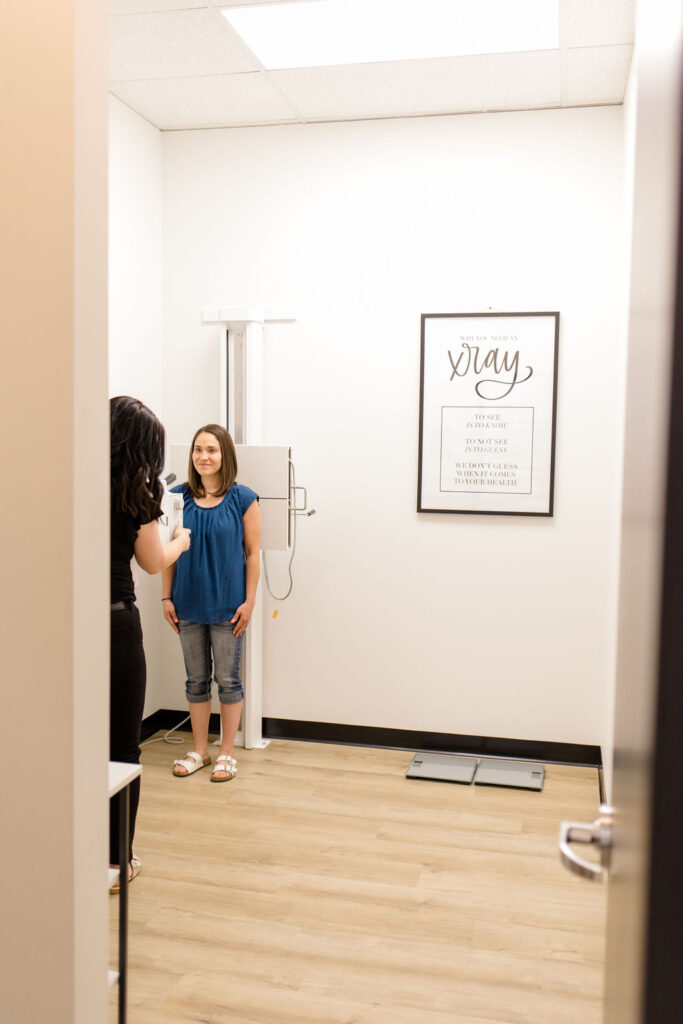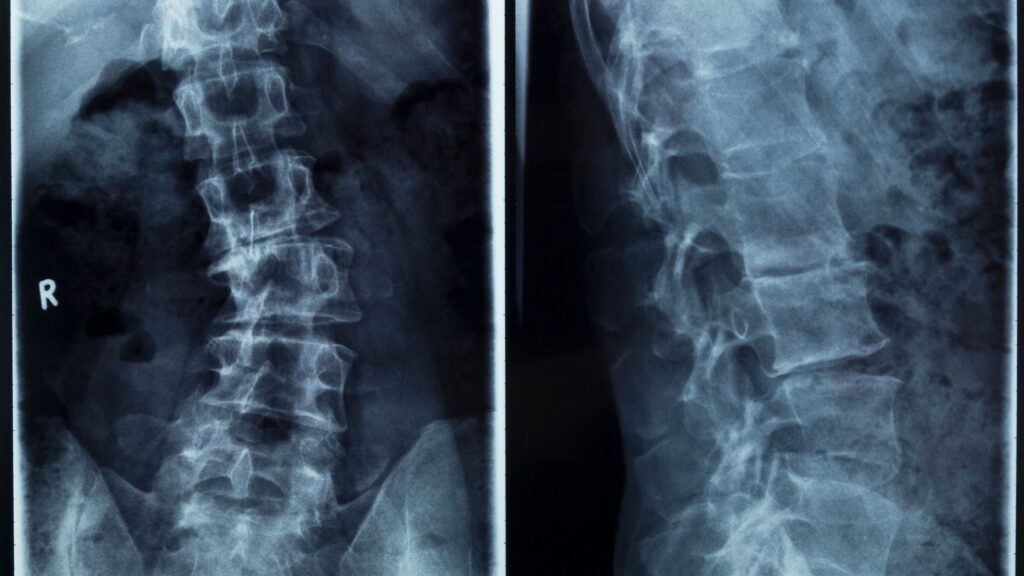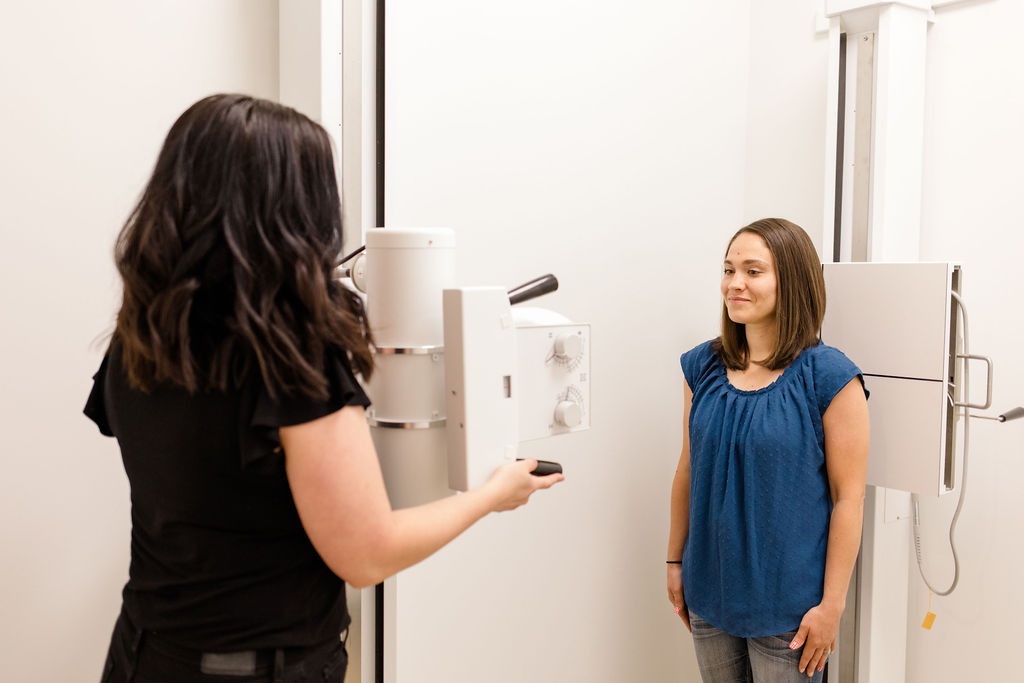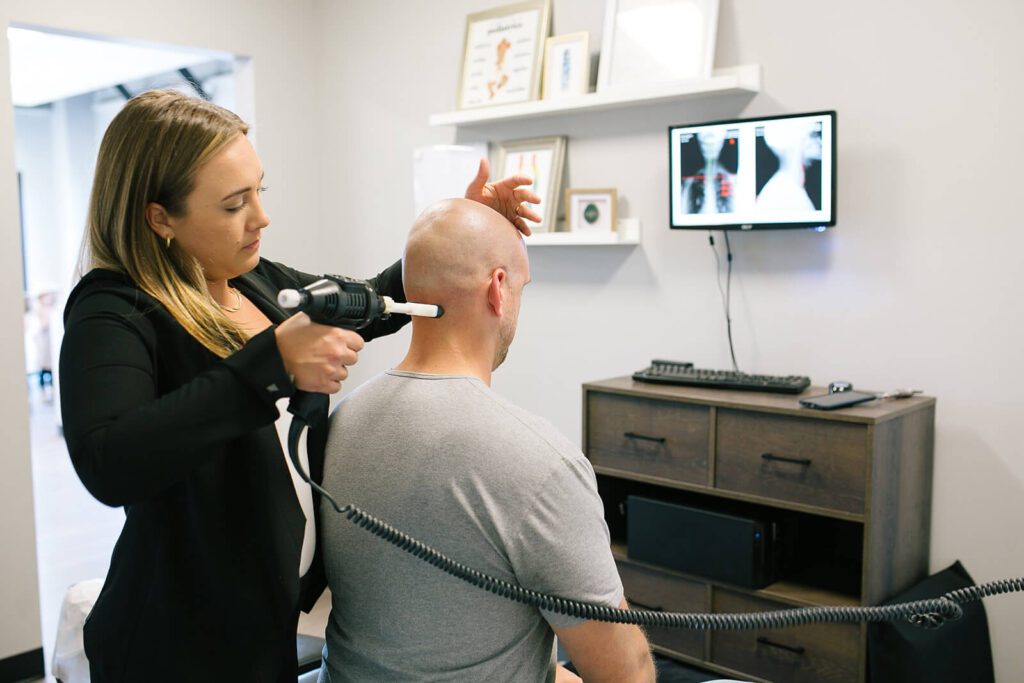If you’re wondering, ‘Do chiropractors take insurance,’ the answer is generally yes, but the specifics can vary. This article explains what you need to know about insurance coverage for chiropractic care, including types of plans that offer coverage, how to verify your benefits, and what options you have if your insurance doesn’t cover chiropractic services.
Key Takeaways
- Most health insurance plans, including Medicare and car insurance, cover chiropractic services, but coverage details can vary significantly between plans.
- Due to negotiated rates, choosing in-network chiropractors generally results in lower out-of-pocket costs; however, verifying insurance benefits is essential before treatment.
- Alternative payment options, such as HSAs, FSAs, and financing plans, are available for patients whose insurance does not fully cover chiropractic care.
Chiropractic Care and Insurance Coverage
Chiropractic care is a holistic approach that aims to relieve pain, correct alignment issues, and promote the body’s self-healing capabilities.
It’s particularly effective in treating musculoskeletal pain, chronic conditions, and injuries, including:
- back pain
- neck pain
- headaches
- joint problems
For many patients, chiropractic treatments offer a non-invasive alternative to surgery and long-term medication use.
When it comes to insurance coverage, most health insurance plans today cover chiropractic services. This includes types of insurance like healthcare plans, Medicare, and even car insurance. Many chiropractors accept insurance, making it easier for patients to afford the necessary care. However, insurance cover chiropractors can vary. Some insurance policies cover chiropractic services as part of a defined treatment plan for specific injuries or pain. In contrast, others may limit the number of visits or types of treatments covered.
Knowing your insurance coverage for chiropractic care can help you make informed decisions and avoid unexpected costs. Whether dealing with an injury or seeking overall wellness, understanding your plan helps you plan your care effectively. Here are some standard health insurance plans that typically provide coverage for chiropractic services.
Common Health Insurance Plans That Cover Chiropractic Care
The extent of insurance coverage for chiropractic care varies widely among health insurance plans. Some plans cover all chiropractic visits, while others may require copayments or limit the number of visits per year. Understanding these details, including chiropractic coverage, can help you avoid surprises on your bill.
Typical health insurance plans, like Blue Cross Blue Shield, often cover chiropractic services as part of an active treatment plan. If your chiropractor deems the treatment medically necessary, your visits will likely be covered. However, coverage may depend on specific factors, such as the type of treatment, the number of visits allowed, and whether pre-authorization is required. Always check with your insurance provider to confirm these details.
In addition to traditional insurance plans, you can use Health Savings Accounts (HSAs) and Flexible Spending Accounts (FSAs) to pay for chiropractic services with pre-tax dollars, thus reducing overall healthcare costs. These accounts can be a great way to manage out-of-pocket expenses effectively, making chiropractic care more affordable and accessible.
In-Network vs. Out-of-Network Chiropractors
Choosing between in-network and out-of-network chiropractors can significantly impact your healthcare costs. In-network providers typically lower costs due to negotiated rates with insurance companies. These chiropractors have agreements with insurance providers to offer services at reduced rates, making them more affordable for patients.
On the other hand, seeing an out-of-network chiropractor can lead to higher out-of-pocket expenses. Depending on your specific insurance plan, these visits may not be covered at all or only partially covered, requiring you to pay a more significant portion of the bill. Before scheduling an appointment with an out-of-network chiropractor, it’s crucial to check with your insurance company to understand the coverage and benefit terms.
Always verify whether the chiropractor’s office accepts your insurance plan to avoid unexpected costs. This can save you time and money, allowing you to focus on your health and well-being.

How to Verify Your Chiropractic Insurance Benefits
Before starting treatment, verify your chiropractic insurance benefits. To ensure accuracy, collect essential details such as your policy number and the relationship between you and the primary plan holder.
Many chiropractors will verify your insurance benefits before your treatment, often at no additional cost. This can save you a lot of hassle and provide you with a clear understanding of what to expect. Communicate with your insurance provider and the chiropractor’s office to confirm your coverage, potential out-of-pocket costs, and any necessary pre-authorization steps.
Insurance benefits for chiropractic services vary, so it’s always a good idea to contact your insurance provider directly to confirm the policy’s validity and any coverage limitations, including copays and deductibles. Understanding these specifics will help you avoid unexpected charges and make informed decisions about your healthcare.
The Role of Medicare and Medicaid in Chiropractic Care
Medicare and Medicaid play unique roles in covering chiropractic care. For Medicare, chiropractors must be enrolled in the program for their services to be eligible for coverage. Medicare Part B covers chiropractic services if they are deemed medically necessary for correcting spinal misalignments. This includes spinal manipulation and some acupuncture treatments for chronic lower back pain.
However, Medicare Part A does not cover chiropractic treatments, as it primarily pays for hospital-related services. It’s also important to note that services considered maintenance therapy, which aims to improve overall health rather than correct misalignments, are not covered by Medicare. Despite these limitations, there is no annual limit on chiropractic visits under Medicare, provided each visit is medically necessary.
Medicaid coverage for chiropractic care varies by state, so you must check with your local Medicaid office to understand what is covered. This can help ensure you receive the necessary care without facing unexpected costs.
Workers Compensation and Chiropractic Treatment
Workers’ compensation benefits are designed to cover medical expenses and lost wages for injured employees. Chiropractic care can be included in these claims if it is deemed necessary to treat work-related injuries. This can be particularly beneficial for employees suffering from musculoskeletal issues, as chiropractic treatments can help alleviate pain and promote recovery.
Receiving chiropractic care under workers’ compensation can streamline your treatment process, ensuring you get the care you need while your medical expenses are covered. Communicate with your employer and workers’ compensation provider to understand your coverage specifics and ensure your chiropractic visits are approved.
Utilizing workers’ compensation benefits allows you to focus on recovery without the stress of medical bills, aiding a quicker and healthier return to work.
Options When Insurance Doesn’t Cover Chiropractic Costs
Patients can explore alternative options if health insurance plans do not cover chiropractic care. Self-paying for services provides greater flexibility and control over treatment choices and avoids the complexities of insurance regulations.
Health Savings Accounts (HSAs) and Flexible Spending Accounts (FSAs) can also help manage the costs of chiropractic treatments effectively. These accounts allow you to use pre-tax dollars to pay for medical expenses, reducing healthcare costs.
Additionally, financing options like Care Credit and Benefits offer payment plans to help cover out-of-pocket chiropractic costs. Care Credit provides interest-free terms for up to 18 months, while Denefits offers financing without credit checks.

Finding a Chiropractor Who Accepts Your Insurance
Finding a chiropractor who accepts your insurance can be straightforward. Check with your insurance provider, seek recommendations, or search online. Many chiropractors list accepted insurance plans on their websites, making it easier to find a suitable provider.
Document all gathered insurance information in electronic medical records (EMR) for easy reference. This will streamline future visits and ensure your insurance details are readily available. Comprehensive care plans that align with your insurance coverage can provide additional benefits and make your treatment more affordable.
These steps can help you find a chiropractor who accepts your insurance, ensuring you receive the necessary care without added financial stress.
The Benefits of Using Insurance for Chiropractic Care
Using insurance for chiropractic treatment can significantly reduce out-of-pocket expenses for patients. This allows you to receive comprehensive care without worrying about the financial burden, making chiropractic care more accessible.
Insurance coverage allows access to a broader range of therapeutic services at a single location. These can include various treatments that address different aspects of health, offering a more holistic approach to care.
Choosing a chiropractor that accepts insurance provides numerous benefits, including access to comprehensive care plans that can help you achieve better overall wellness. By utilizing your insurance benefits, you can ensure that you receive the necessary treatments to maintain your health and well-being.
Summary
Navigating the chiropractic care and insurance world can be complex, but understanding your options and benefits can make the process much smoother. From verifying your insurance coverage to finding a chiropractor who accepts your plan, each step is crucial in ensuring you receive the best care possible.
Using the information in this guide, you can make informed decisions about chiropractic care, manage your healthcare costs effectively, and focus on achieving better health and overall wellness.
Frequently Asked Questions
Do most health insurance plans cover chiropractic care?
Most health insurance plans cover chiropractic care, but the specifics of that coverage can differ significantly among plans. It’s advisable to check your policy for exact benefits.
How can I verify my chiropractic insurance benefits?
To verify your chiropractic insurance benefits, gather your insurance information and contact your insurance provider and chiropractor to inquire about coverage details and pre-authorization requirements.
What if my insurance doesn’t cover chiropractic costs?
If your insurance doesn’t cover chiropractic costs, consider self-paying, utilizing Health Savings Accounts (HSAs) or Flexible Spending Accounts (FSAs), and exploring financing options like Care Credit. These alternatives can help manage expenses effectively.
Does Medicare cover chiropractic services?
Chiropractic services are covered by Medicare when deemed medically necessary for correcting spinal misalignments, but they are not covered under Medicare Part A.
How can I find a chiropractor who accepts my insurance?
To find a chiropractor who accepts your insurance, check with your insurance provider for a list of covered chiropractors or search online for practitioners who specify accepted insurance plans on their websites. This will help ensure you choose a provider that fits your coverage.










